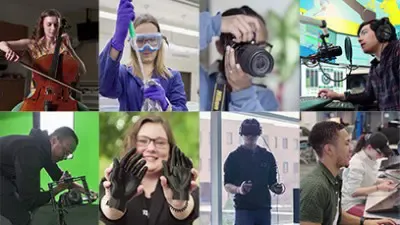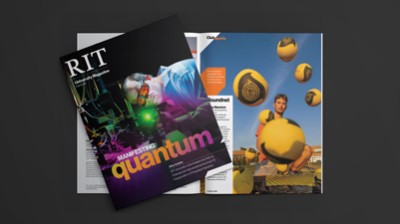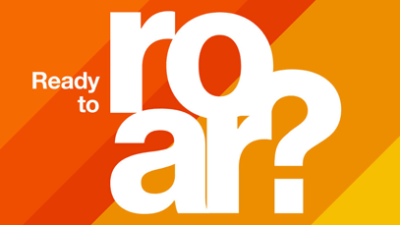Vertically Integrated Project
Location-Based AR for Public History: Co-designing community stories for social impact
- RIT/
- Vertically Integrated Projects/
- Location-Based AR for Public History: Co-designing community stories for social impact

Goals
This VIP invites students from a range of disciplines (computer science, digital media, history, art, design, and more) to collaboratively develop a mobile augmented reality (AR) experience that digitally reconstructs the lost Clarissa Street neighborhood in Rochester, NY. The project will begin with an existing AR prototype of the Pythodd Jazz Club, once a legendary stop on the Chitlin’ Circuit, and will expand to revive other historically significant Black-owned businesses and community spaces erased by systemic racism, failed urban renewal, and discriminatory practices such as redlining. Through archival research, oral histories, 3D modeling, and immersive storytelling, students will explore how spatial computing can preserve cultural memory, foster cross-cultural understanding, and address the legacy of racial injustice.
This digitally constructed living museum will continue to evolve, serving as an interactive platform to engage the public with untold stories, reimagine the future of historically Black urban spaces, and honor the living legacy of the Clarissa Street community, whose annual reunions keep the neighborhood’s spirit alive.
Issues Involved or Addressed
This VIP course tackles the challenges of creating a location-based augmented reality (AR) experience that digitally reconstructs historical data. The project addresses the impacts of systemic racism, including redlining and urban renewal, which erased Black-owned businesses and community spaces in Rochester, leading to the displacement of residents and the disintegration of the neighborhood’s social fabric.
The project explores technical issues such as geo-locating AR content within a real-world context, digitally reconstructing historic buildings from limited archival materials, and integrating immersive elements like spatial audio. Design considerations will prioritize creating an intuitive, accessible user interface (UI) that supports diverse audiences and ensures cross-platform compatibility. Ethical storytelling is a core focus, emphasizing inclusivity and cultural sensitivity to reflect the lived histories of the Clarissa Street community.
Additionally, the project will address the challenge of scaling the AR experience to include multiple sites and effectively delivering content across these locations. This requires thoughtful design and adherence to best practices to maintain consistency, clarity, and an engaging flow of information. UI design will be guided by principles of inclusivity, ensuring that users from various backgrounds can interact with the content in meaningful ways.
Methods and Technologies
Creating a location-based community AR project requires a combination of technical tools, creative methods, historical research, and community-centered approaches.
The technology involved includes, but is not limited to, the following:
- AR Development Platforms
- 3D Modeling and Asset Creation
- Geolocation and Mapping
- Audio and Visual Media Tools
- Content Management and Backend Development
- Mobile Devices and AR Hardware
The methods employed include:
- Community-Centered Design
- Archival and Historical Research
- Human-Centered UX/UI Design
- Research on AR Best Practices
- Place-Based Storytelling
- Ethical Documentation and Consent
- Project Management
- Iterative Prototyping
- Monitoring and Evaluating Spatial Computing Advancements
Academic Majors / Major Area of Interest
This course is ideal for undergraduate and graduate students who are passionate about working with AR/VR technology and using this new digital media to tell powerful stories, preserve cultural history, and create social impact. Students will thrive in this course if they are curious, collaborative, and eager to work across disciplines to build immersive, location-based experiences grounded in community engagement and historical research.
Academic Majors & Programs include but are not limited to:
- New Media Design / New Media Interactive Development
- Game Design & Development
- Computer Science / Software Engineering
- Digital Humanities / Museum Studies / Public History
- Architecture / Urban Studies / Historic Preservation
- Graphic Design / Visual Communication
- Film & Media Studies / Documentary Production
- Anthropology /Sociology / African American Studies /Cultural Studies
- Music / Audio Engineering / Jazz Studies
- Entrepreneurship / Project Management
- Individualized Study
Areas of Interest includes:
- Augmented and Virtual Reality
- Immersive Storytelling
- Racial and Social Justice
- Community-Based Design
- Cultural Heritage and Memory
- Locative Media
- Archival Research
- Experience Design
- Digital Preservation
- Tech for Social Good









